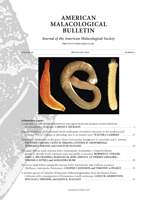Gastropods have served as research subjects for investigating questions that transcend both the taxon and the field of malacology. A major set of questions arises from repeated patterns in the microstructure, sculptural features, and coiling geometry of gastropod shells. The problem of similarity is one of distinguishing among alternative explanations of repetition and close resemblances. What explains the repetition of structural features? Are features similar as a consequence of shared ancestry (homology) or as a consequence of evolutionary convergence on good functional solutions (analogy)? There is increasing evidence for a third alternative that lies outside the evolutionary sphere, invoking the laws of physics and chemistry, building materials, and the assembly rules that apply strongly to the inorganic calcium carbonate of the gastropod shell. Three concepts are introduced to help organize the analysis of recurring similarities in the shells of marine gastropods. They are (1) remote biomineralization, (2) heterotectonic construction and ontogenetic reorganizations of shell secretion, and (3) structural funicity of the shell. Remote biomineralization produces organized structures without influence of the mantle, extrapallial space, and periostracum. Reticulate meshworks of aragonite on the exterior surfaces of larval shells are an example. Heterotectonic construction recognizes repeated instances of change in coiling geometry of the larval shell (protoconch) and the adult shell (teleoconch). Heterostrophy is an example of heterotectonic construction that is specific to the clade Heterobranchia; but there are many constructional changes that recur in other groups that are not closely-related. Examples include the set of changes that thicken larval shells (imbricate thickening) during the metamorphic reorganization of shell secretion and transition to secretion of new calcium carbonate microstructures. Funicity is a property of shell that results in recurring features that record ontogenetic history and ecological events. Funeous details include growth increments as records of periodic environmental rhythms, isotopic records of climate, and records of interaction with other organisms, including non-lethal damage inflicted by predators and modifications of shells by symbionts. Shells also record details of their post-mortem history, including a rich funeous record in deep time on and in shells in the fossil record.
How to translate text using browser tools
1 January 2013
Interacting Constraints and the Problem of Similarity in Gastropod Structure and Function
Carole S. Hickman
ACCESS THE FULL ARTICLE
Constructional morphology
funicity
heterotectonic construction
non-classical crystallization
remote biomineralization





